What to See in Palermo in One Day – The Soul of Sicily
- The Sicilian Wanderer

- Aug 20
- 16 min read

Palermo is not just the capital of Sicily, it’s a crossroads of civilizations where every corner tells a different story. Arab domes stand next to Baroque palaces, Byzantine mosaics shine under the same sun that warms bustling street markets, and the scent of spices mixes with that of espresso and fresh cannoli. Visiting Palermo in just one day means diving into a whirlwind of art, history, and flavors. It’s a journey through centuries of culture, where East meets West, and tradition embraces modern life.
Palermo Cathedral
A unique blend of styles: Norman, Arab, Gothic, Renaissance, and Baroque. Built in 1185 on the site of earlier sacred buildings, the Cathedral is a masterpiece that reflects centuries of history and cultural layers. Its exterior combines Arab-Norman arches and towers with a magnificent Gothic-Catalan portico, while the interior, redesigned in the 18th century, shows neoclassical lines that contrast with the medieval façade.
Inside, visitors can admire the bronze meridian line created in the 19th century by astronomer Giuseppe Piazzi, once used to calculate true solar noon. The highlight is the Royal Tombs, where kings and emperors such as Roger II, Henry VI, and Frederick II rest. The Treasury preserves priceless relics, including the golden Crown of Constance.
A must is the climb to the rooftops: from here, breathtaking views stretch across the old town, the domes of nearby churches, and the mountains that embrace the city.
Visitor Information
Location: Via Vittorio Emanuele, near Quattro Canti.
Opening hours (Cathedral nave): Mon–Sat 7:00–19:00; Sun and holidays 12:00–17:30.
Monumental area (Rooftops, Tombs, Crypt, Treasury, Apses): Mon–Sat 9:30–18:00; Sun and holidays 10:00–18:00. Last entry 30 minutes before closing.
Tickets: Full access from €12–18 depending on areas; entry to the main nave is free.
Tips: The rooftop requires a steep climb; suitable shoes recommended. Access may be suspended in case of ceremonies or bad weather.
Website: www.cattedrale.palermo.it | ticket-shop-cattedraledipalermo.it
Palatine Chapel (Cappella Palatina)

Inside the Norman Palace, the Palatine Chapel is one of the most extraordinary artistic treasures of Europe. Commissioned by King Roger II in the 12th century, it embodies the cultural crossroads of Sicily: Byzantine mosaics cover the walls with scenes of Christ Pantocrator and biblical stories, the wooden muqarnas ceiling reflects Islamic art, and the marble floor patterns echo Roman traditions.
Every surface tells a story of coexistence between East and West, faith and power. The golden mosaics shimmer in the dim light, creating a spiritual atmosphere that leaves visitors breathless. This chapel is often considered the jewel of the UNESCO Arab-Norman itinerary of Palermo.
Visitor Information
Location: Inside the Norman Palace (Palazzo dei Normanni), Piazza Indipendenza.
Opening hours:
Monday–Saturday: 8:30–16:30 (last entry at 16:00)
Sunday and public holidays: 8:30–12:30
Tickets: Full access to the Palace and Chapel from €15.50 to €19 depending on the day; reduced tickets available for students and seniors; free for children under 12.
Booking: Recommended, especially on weekends and holidays.
Tips: Allow at least one hour for the full visit to appreciate both the mosaics and the Royal Apartments. Photography is permitted but without flash.
San Giovanni degli Eremiti
Recognizable from afar by its striking red domes, San Giovanni degli Eremiti is one of the most iconic symbols of Arab-Norman Palermo. Built in the 12th century under Roger II, the church was erected on the remains of an ancient mosque and earlier monasteries, perfectly reflecting the cultural blend of the city.
The interior is sober and almost austere, with a simple nave that highlights the purity of Norman architecture. What makes the site truly enchanting is the peaceful cloister garden: a serene space surrounded by arches and Mediterranean plants, where silence contrasts with the bustling streets outside. This garden is especially beautiful in spring, when bougainvillea and citrus trees are in bloom, offering one of the most photogenic corners of Palermo.
Visitor Information
Location: Via dei Benedettini, near the Norman Palace.
Opening hours:
Tuesday–Saturday: 9:00–19:00 (last entry 18:30)
Sunday and public holidays: 9:00–13:30 (last entry 13:00)
Closed on Mondays.
Tickets: Adults €6; reduced €3 (students, teachers, children).
Tips: Combine the visit with the Palatine Chapel, as they are within walking distance. The garden is perfect for a short relaxing break during your sightseeing tour.
Website: www.regione.sicilia.it/beniculturali
Quattro Canti
Known as the “theater of the city,” Quattro Canti is the symbolic heart of Palermo. Built in the early 17th century by architect Giulio Lasso, this baroque square lies at the intersection of the city’s two main streets: Via Maqueda and Corso Vittorio Emanuele. Its official name is Piazza Vigliena, but everyone in Palermo calls it Quattro Canti, meaning “Four Corners.”
Each of the four façades is curved and decorated on three levels: the bottom tier represents the four seasons, the middle tier shows the Spanish kings who ruled Sicily, and the top tier displays the city’s patron saints. The symmetry of the architecture makes the square look like an open-air stage, and sunlight hits each side in turn throughout the day, creating natural theatrical lighting.
Today, Quattro Canti is not only a masterpiece of urban design but also the perfect starting point to explore Palermo’s historic core. From here you can easily reach the Cathedral, the Palatine Chapel, Piazza Pretoria, and the main markets.
Visitor Information
Location: Intersection of Corso Vittorio Emanuele and Via Maqueda.
Opening hours: Always open.
Tickets: Free access.
Tips: Visit in the morning for quiet photos or at sunset when the façades glow in golden light. Street performers often gather here, adding to the lively atmosphere.
Piazza Pretoria

Just a few steps from Quattro Canti, Piazza Pretoria is one of Palermo’s most scenic squares. Its centerpiece is the grand Fontana Pretoria, designed in Florence in the 16th century by Francesco Camilliani and brought to Palermo in 1574. The monumental fountain dominates the square with its wide circular basins, staircases, and dozens of statues representing mythological figures, allegories, and animals.
Because of the nudity of the statues, the fountain was nicknamed the “Fountain of Shame” (Fontana della Vergogna) by locals. Surrounded by some of the city’s most important buildings—Palazzo Pretorio (today’s City Hall), the Church of Santa Caterina, and the Church of San Giuseppe dei Teatini—the square is a perfect example of Palermo’s baroque grandeur.
In the evening, when illuminated, the fountain takes on a magical charm and becomes a romantic stop during a stroll through the historic center.
Visitor Information
Location: Between Quattro Canti and Piazza Bellini, in front of Palermo’s City Hall.
Opening hours: The square is always open. The fountain can be admired from outside at any time.
Tickets: Free access.
Tips: Visit also the nearby Church of Santa Caterina, famous for its rococo interiors and cloister with a pastry shop run by nuns. The square is particularly photogenic at night.
Church of the Martorana (Santa Maria dell’Ammiraglio)
The Church of the Martorana, founded in 1143 by George of Antioch—admiral of King Roger II—is one of Palermo’s most celebrated monuments and a jewel of the Arab-Norman-Byzantine tradition. From the outside, its simple medieval façade gives little idea of the treasure within. Once inside, visitors are struck by the dazzling Byzantine mosaics, considered among the finest in the Mediterranean.
The most famous is the image of Christ Pantocrator, gazing down from the dome, surrounded by Old and New Testament scenes rendered in vibrant gold and lapis hues. Later additions in the 16th and 17th centuries enriched the church with baroque frescoes and stuccoes, creating a unique blend of styles where Byzantine severity meets Sicilian exuberance.
The Martorana is also historically significant: in 1433 it was given to the Greek Orthodox community of Palermo, which still manages it today. This makes it a living place of worship where Byzantine liturgy continues.
Visitor Information
Location: Piazza Bellini, next to San Cataldo and a few steps from Piazza Pretoria.
Opening hours: Weekdays 9:30–13:00 and 15:30–17:00; weekend hours may vary, so check locally.
Tickets: Around €2–3 per person.
Tips: Combine your visit with the neighboring Church of San Cataldo for a perfect overview of Arab-Norman architecture. Morning light is ideal for photographing the mosaics.
San Cataldo
Standing side by side with the Church of the Martorana in Piazza Bellini, San Cataldo is one of the purest and most iconic examples of Arab-Norman architecture in Palermo. Built in the 12th century under William I, the church is immediately recognizable thanks to its three red domes, which have become one of the city’s most photographed symbols.
The exterior is austere, with squared stone walls and narrow windows, reflecting the simplicity of Norman style combined with Islamic influences. The interior is equally sober, with bare stone walls and a clean, geometric layout that highlights the building’s medieval character. Unlike the Martorana, San Cataldo has very little decoration, but this minimalism enhances its spiritual atmosphere and architectural clarity.
San Cataldo is part of the UNESCO World Heritage Arab-Norman itinerary, together with the Cathedral, Palatine Chapel, Martorana, and other monuments in Palermo, Cefalù, and Monreale.
Visitor Information
Location: Piazza Bellini, next to the Martorana.
Opening hours: Generally 9:00–17:00 daily (check locally for variations on Sundays or public holidays).
Tickets: Around €2–3 per person.
Tips: Its simplicity contrasts beautifully with the rich mosaics of the Martorana—visit both to appreciate the two faces of Arab-Norman art. The square outside is a lively spot, often filled with street musicians and cafés.
Teatro Massimo
The Teatro Massimo Vittorio Emanuele is the largest opera house in Italy and the third largest in Europe, inaugurated in 1897. Its neoclassical façade dominates Piazza Verdi, while inside, gilded decorations, red velvet, and elegant chandeliers create a spectacular setting. The theatre is world-famous, not only for its acoustics but also for its appearance in The Godfather Part III.
Guided tours reveal the grand auditorium, the royal box, and backstage areas, giving a sense of the theatre’s history and architecture. For music lovers, attending an opera or concert here is an unforgettable experience.
Visitor Information
Location: Piazza Verdi.
Opening hours (tours): Daily 9:30–18:00, with tours every 30 minutes. Evening hours vary depending on performances.
Tickets: Guided tour €10 adults; reduced €5 students; free for children under 6. Performances vary in price.
Tips: Book performances in advance online. Photography is allowed during tours but not during shows.
Website: www.teatromassimo.it
Oratorio di San Lorenzo
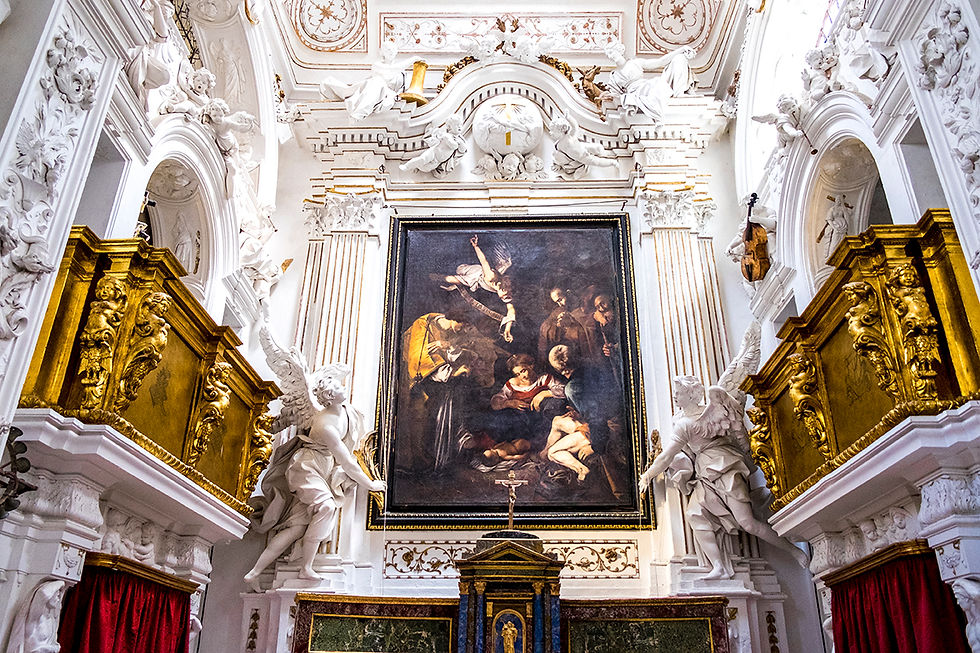
This small oratory, built in the 16th century by the Confraternity of San Lorenzo, is a hidden baroque jewel. Its interior is decorated with exquisite stuccoes by Giacomo Serpotta, considered masterpieces of Sicilian baroque sculpture.
Originally, the church also hosted Caravaggio’s painting Nativity with St. Francis and St. Lawrence, stolen in 1969 and never recovered. Today a high-quality replica hangs in its place.
Visitor Information
Location: Via dell’Immacolatella, near Piazza San Francesco.
Opening hours: Daily 10:00–18:00.
Tickets: Around €5.
Tips: Visit with a guide to fully appreciate the meaning of Serpotta’s allegorical figures.
Ballarò Market
The oldest and most vibrant market in Palermo, Ballarò stretches through the Albergheria district. It’s a riot of colors, aromas, and voices: vendors shouting in dialect, stalls overflowing with fruits, vegetables, spices, fresh fish, and of course, street food.
Here you can taste Palermo’s most famous specialties: arancine (fried rice balls), panelle (chickpea fritters), sfincione (Sicilian pizza), and seasonal treats. Ballarò is not just a place to eat but also to feel the authentic pulse of local life.
Visitor Information
Location: Between Piazza Ballarò and Corso Tukory.
Opening hours: Daily, usually from 8:00 to late afternoon (around 19:00).
Tickets: Free access.
Tips: Go in the morning for the liveliest atmosphere. Keep an eye on your belongings, as it gets crowded.
Catacombs of the Capuchins (Catacombe dei Cappuccini)
An unusual but unforgettable experience, the Capuchin Catacombs host the mummified remains of over 8,000 people, displayed along underground corridors. Dating back to the 16th century, they became a prestigious burial site for nobles and clergy.
The most famous mummy is that of Rosalia Lombardo, a two-year-old girl who died in 1920 and is so well preserved that she looks like she is peacefully sleeping.
Visitor Information
· Location: Piazza Cappuccini, west of the historic center.
· Opening hours: Daily 9:00–13:00 and 15:00–18:00.
· Tickets: Adults €3; reduced €1.50.
· Tips: Not recommended for very young children or sensitive visitors. Photography is generally forbidden inside.
Monreale Cathedral (Duomo di Monreale)
Just a few kilometers outside Palermo, Monreale Cathedral is a masterpiece of Norman architecture and part of the UNESCO Arab-Norman itinerary. Built in 1174 by King William II, it is world-famous for its 6,000 square meters of golden mosaics that depict biblical scenes from Creation to the New Testament.
The cloister, with its 228 twin columns decorated with mosaics and carvings, is a masterpiece in itself and one of the highlights of Sicilian medieval art.
Visitor Information
Location: Monreale, about 8 km from Palermo (30 minutes by bus or taxi).
Opening hours: Monday–Saturday 8:30–12:30 and 14:30–17:00; closed Sunday mornings during Mass.
Tickets: Entrance to the Cathedral is free; full access (cloister, terraces, and treasury) around €10.
Tips: Visit in the morning for the best light on the mosaics. Combine with a panoramic walk around Monreale for stunning views over Palermo.
Website: www.duomomonreale.com
Church of the Gesù (Casa Professa)

Hidden in the heart of Palermo’s old quarter, the Church of the Gesù—commonly known as Casa Professa—is one of the most spectacular examples of Sicilian Baroque. Originally built by the Jesuits in the late 16th century, the church was richly decorated in the 17th and 18th centuries with colorful marble inlays, stuccoes, and frescoes.
Inside, every surface is covered with precious stones: polychrome marbles form intricate floral and geometric patterns, while the side chapels overflow with sculptures and ornate altars. The effect is dazzling, making Casa Professa one of the most richly decorated churches in all of Sicily.
The church also holds an important library and archives belonging to the Jesuit order, preserving manuscripts and rare volumes.
Visitor Information
Location: Piazza Casa Professa, near Ballarò Market.
Opening hours: Daily from 9:00 to 17:30 (hours may vary on Sundays and religious holidays).
Tickets: Around €2–3.
Tips: Don’t miss the contrast between the simple exterior and the explosion of decoration inside. Visit in the morning for the best natural light highlighting the marble inlays.
Piazza San Domenico

One of Palermo’s most elegant squares, Piazza San Domenico is dominated by the Church of San Domenico, a baroque jewel built in the 17th century. Its grand façade, twin bell towers, and richly decorated interior make it one of the most important Dominican churches in Sicily. Inside you’ll find tombs and memorials dedicated to notable Sicilian figures, including patriots of the Risorgimento.
At the center of the square stands the Colonna dell’Immacolata, an 18th-century marble column topped with a statue of the Virgin Mary, around which traditional celebrations are held on December 8th, the Feast of the Immaculate Conception.
Today, Piazza San Domenico is a lively meeting point surrounded by cafés, boutiques, and historic palaces. It’s also the starting point of Via Roma, one of the city’s main shopping streets.
Visitor Information
Location: At the intersection of Via Roma and Via Vittorio Emanuele.
Opening hours: The square is always open. The church is generally open daily from morning until early evening.
Tickets: Free access to the square; small contribution for church visits.
Tips: Ideal spot for an aperitivo or coffee while admiring the architecture.
Via Roma

Via Roma is one of Palermo’s main arteries, stretching from Stazione Centrale to Teatro Politeama. Built in the late 19th and early 20th centuries, it is lined with elegant buildings, arcades, and shops, representing the city’s modern urban planning after centuries of medieval layout.
Walking along Via Roma, you’ll pass important landmarks such as Piazza San Domenico, the Post Office Palace, and various art nouveau façades. The street is a hub for shopping, with international brands, local boutiques, and historic cafés.
Visitor Information
Location: Connects Palermo’s central station (Stazione Centrale) with Politeama Square.
Opening hours: Public street, always accessible. Shops usually open 9:00–20:00 (with a lunch break in smaller stores).
Tickets: Free access.
Tips: A pleasant walk to combine sightseeing with shopping. In December, Via Roma is beautifully decorated with Christmas lights.
Regional Archaeological Museum Antonio Salinas
The Museo Archeologico Regionale “Antonio Salinas” is one of Italy’s most important archaeological museums and a must for history lovers visiting Palermo. Housed in a former 17th-century Olivetan monastery, the museum preserves extraordinary collections that tell the story of Sicily’s ancient civilizations.
Among its treasures are the metopes from the temples of Selinunte, masterpieces of Greek sculpture dating back to the 6th–5th centuries BC, which alone make the visit worthwhile. The museum also hosts Phoenician, Etruscan, Roman, and Egyptian artifacts, along with coins, inscriptions, and everyday objects that reveal Sicily’s role as a crossroads of Mediterranean cultures.
The cloister and courtyard of the old monastery add to the charm, offering a peaceful setting surrounded by antiquities.
Visitor Information
Location: Piazza Olivella, just behind Teatro Massimo.
Opening hours: Tuesday–Saturday 9:00–18:00; Sunday 9:00–13:30; closed on Mondays.
Tickets: Adults €6; reduced €3; free entry for EU citizens under 18.
Tips: Combine the visit with a tour of Teatro Massimo, as the museum is just a short walk away. The Selinunte sculptures are the highlight, but don’t miss the numismatic collection and the Egyptian artifacts.
Foro Italico & Seafront Promenade

The Foro Italico is Palermo’s wide seafront promenade, a green open space overlooking the Mediterranean. Locals come here to walk, jog, or simply relax on the grass with a view of the sea. In the late afternoon, families gather and children play, creating a lively yet peaceful atmosphere.
From the promenade you can admire the Gulf of Palermo framed by Monte Pellegrino, which Goethe once described as “the most beautiful promontory in the world.” At sunset, the sky often lights up in shades of orange and pink, making it one of the most romantic spots in the city.
Visitor Information
· Location: Along Via Foro Umberto I, just outside La Kalsa district.
· Opening hours: Always open.
· Tickets: Free access.
· Tips: Ideal for a relaxing evening stroll after a day of sightseeing. Bring a camera for the sunset views.
La Kalsa District

La Kalsa is one of Palermo’s most atmospheric neighborhoods. Founded during Arab rule in the 9th century, it was once the emir’s quarter and still preserves a labyrinth of narrow streets, small squares, and hidden courtyards.
Today, La Kalsa has been revived as a vibrant district full of street art, bars, and cultural spaces. Old palaces and churches mix with trendy cafés, art galleries, and artisan workshops. By night, the area becomes one of Palermo’s hotspots for aperitivo and nightlife.
Walking through La Kalsa, you’ll encounter treasures like the Church of Santa Teresa alla Kalsa, the Magione Church, and several historic palazzi.
Visitor Information
Location: East of the historic center, between Via Roma and the seafront.
Opening hours: Public neighborhood, always accessible.
Tickets: Free to explore.
Tips: Best explored on foot in the evening. Combine it with a walk to Foro Italico for a perfect night out.
Piazza Marina

Piazza Marina is one of Palermo’s most charming squares, located in the heart of La Kalsa. Surrounded by aristocratic palaces such as Palazzo Chiaramonte Steri, the square is home to the Garibaldi Garden, a leafy park famous for its enormous ficus trees—among the largest in Europe.
Historically, Piazza Marina was used for public executions during the Spanish Inquisition, but today it’s a peaceful place to relax, especially in the shade of the monumental trees. On Sundays, the square hosts a lively flea market, where you can browse antiques, books, and vintage items.
Visitor Information
Location: La Kalsa district, near the seafront.
Opening hours: The square is always open; Garibaldi Garden generally from morning until evening.
Tickets: Free access.
Tips: Don’t miss Palazzo Steri, once the seat of the Inquisition, which now houses exhibitions and historical documents. On Sundays, the flea market adds extra charm.
Palermo Marina Yachting – A Chic Evening Tip
For a modern and stylish twist to your Palermo evening, head to Palermo Marina Yachting, the city’s brand-new waterfront hub located right by the port. Recently redeveloped, this elegant marina combines luxury yachts with a lively promenade lined with restaurants, wine bars, and cafés.
It’s the perfect place to enjoy an aperitivo with a sea view, dine on fresh seafood, or simply stroll along the docks while admiring the boats. The atmosphere is refined but relaxed, attracting both locals and visitors looking for a fashionable spot away from the busiest tourist streets.
At night, the lights of the marina reflect on the water, creating a magical backdrop for a romantic walk or a cocktail under the stars.
Visitor Information
Location: Via Cala, near La Kalsa and Foro Italico.
Opening hours: Public access daily; restaurants and bars usually open from late morning until midnight.
Tickets: Free access to the promenade; food and drinks at individual venues.
Tips: Ideal for a refined aperitivo or dinner after exploring the historic center. It also offers a safe and pleasant walk along the waterfront, especially in the evening.
🌟 What to See in Palermo in One Day – A Practical Itinerary
Palermo is a city so rich in art, history, and flavors that one day is never enough to explore it all. We’ve already listed the main attractions, but since it’s impossible to visit everything in just 24 hours, here we propose a realistic itinerary. This program covers the highlights of the city and offers food suggestions to make the most of your time. Of course, every traveler can adapt the schedule based on personal interests and pace.
🌅 Morning – Arab-Norman Treasures
Start your day in Palermo’s historic center, focusing on the Arab-Norman UNESCO heritage, the city’s unique signature.
Palermo Cathedral (8:30 – 9:30)Begin with the Cathedral, admiring its multi-style architecture and visiting the Royal Tombs and Rooftop for panoramic views.Time needed: ~1h
Palatine Chapel (Cappella Palatina) (10:00 – 11:15)Inside the Norman Palace, the golden mosaics of the Palatine Chapel will leave you breathless.Time needed: ~1h15
San Giovanni degli Eremiti (11:30 – 12:00)A short walk takes you to this serene church with its red domes and cloister garden.Time needed: ~30 min
👉 These three monuments give you the essence of Palermo: a meeting point of Arab, Norman, Byzantine, and Western cultures.
🍝 Lunch – Street Food Experience
For lunch, dive into Palermo’s famous street markets:
Ballarò Market (closest to the morning’s attractions)Try arancine, panelle, cazzilli (potato croquettes), and a slice of sfincione. Don’t forget a sweet cannolo to finish.Budget: €5–10 per person.
Alternative: Capo Market, a bit smaller but just as authentic.
🎨 Afternoon – Baroque & City Life
Quattro Canti & Piazza Pretoria (14:00 – 14:30) Walk through the “theater of the city” and admire the monumental fountain nicknamed the Fountain of Shame.Time needed: ~30 min
Martorana & San Cataldo (14:30 – 15:30) Visit two iconic Arab-Norman churches side by side: the dazzling mosaics of the Martorana and the minimalist beauty of San Cataldo.Time needed: ~1h
Church of the Gesù (Casa Professa) (15:45 – 16:30) Marvel at the explosion of baroque marble decorations, one of the richest in Sicily.Time needed: ~45 min
Teatro Massimo (16:45 – 17:30) End the afternoon with a guided tour of Italy’s largest opera house, or simply admire it from outside with a coffee in Piazza Verdi.Time needed: ~45 min
🌇 Evening – Strolling & Dining by the Sea
Foro Italico & La Kalsa (18:30 – 19:30)Enjoy a sunset walk along the seafront, then explore the trendy streets of La Kalsa, full of bars and street art.
Dinner Options
Traditional trattoria in La Kalsa or near Piazza Marina: taste pasta con le sarde, caponata, or involtini di pesce spada.
Palermo Marina Yachting: for a chic evening by the port, with seafood restaurants and wine bars overlooking luxury yachts.
After Dinner: Stroll around Piazza Marina under its monumental ficus trees, or enjoy a cocktail at one of La Kalsa’s trendy spots.
✨ Spending one day in Palermo means diving into centuries of history, art, and culture. From the golden mosaics of the Palatine Chapel to the vibrant chaos of Ballarò Market, from the majestic Cathedral to the quiet cloisters of San Giovanni degli Eremiti, every step reveals a new layer of the city’s identity.
Palermo is a city of contrasts: solemn yet lively, ancient yet modern, with flavors and traditions that tell the story of a true Mediterranean crossroads. End your day at the seafront, with the sunset over Monte Pellegrino or a glass of Sicilian wine at the Marina Yachting, and you’ll understand why Palermo leaves such a lasting impression.
Even in just 24 hours, this city offers enough memories to stay with you forever.
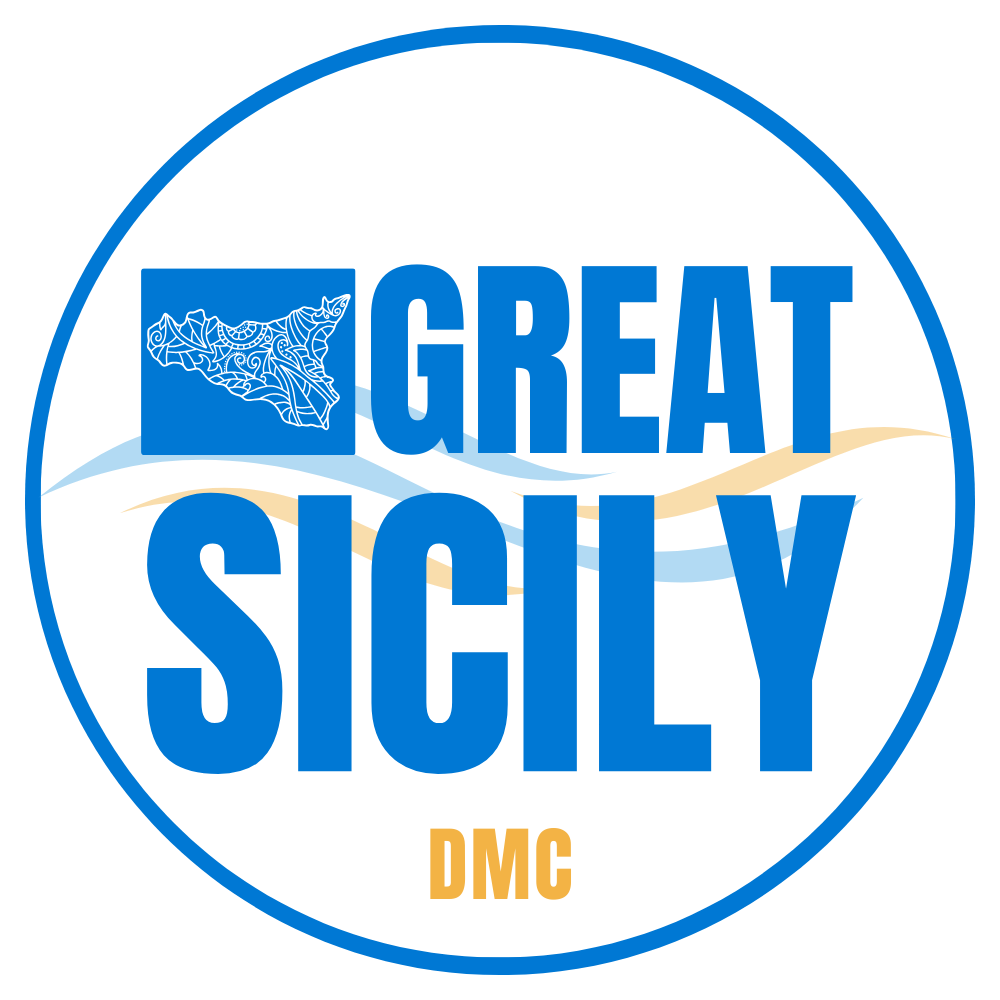








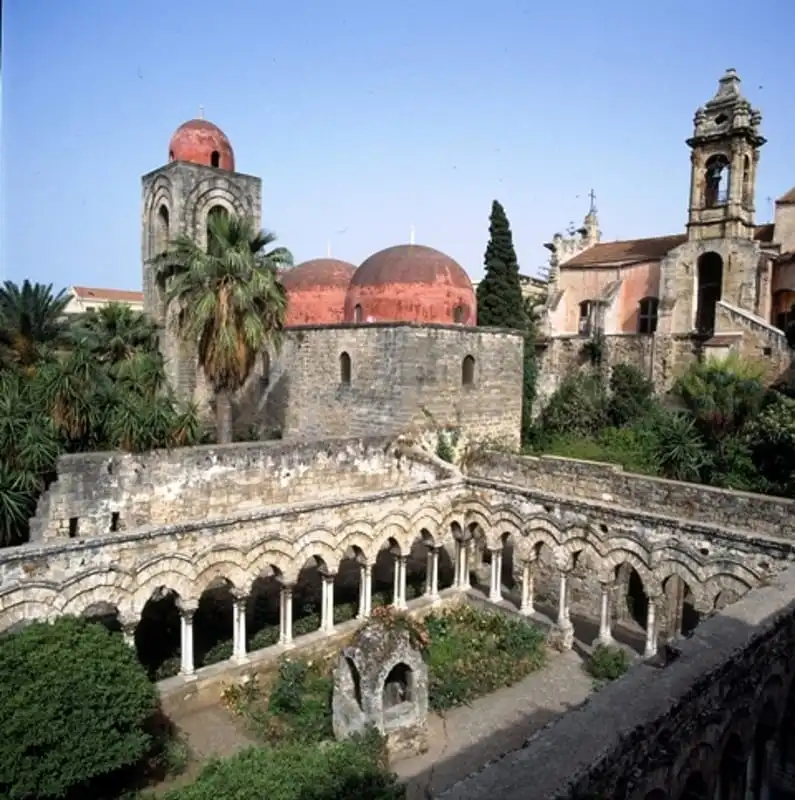





















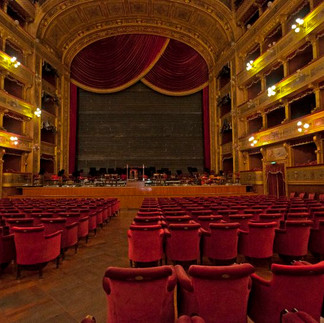










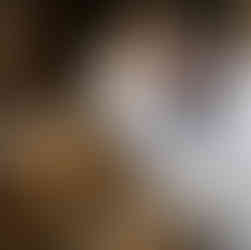

















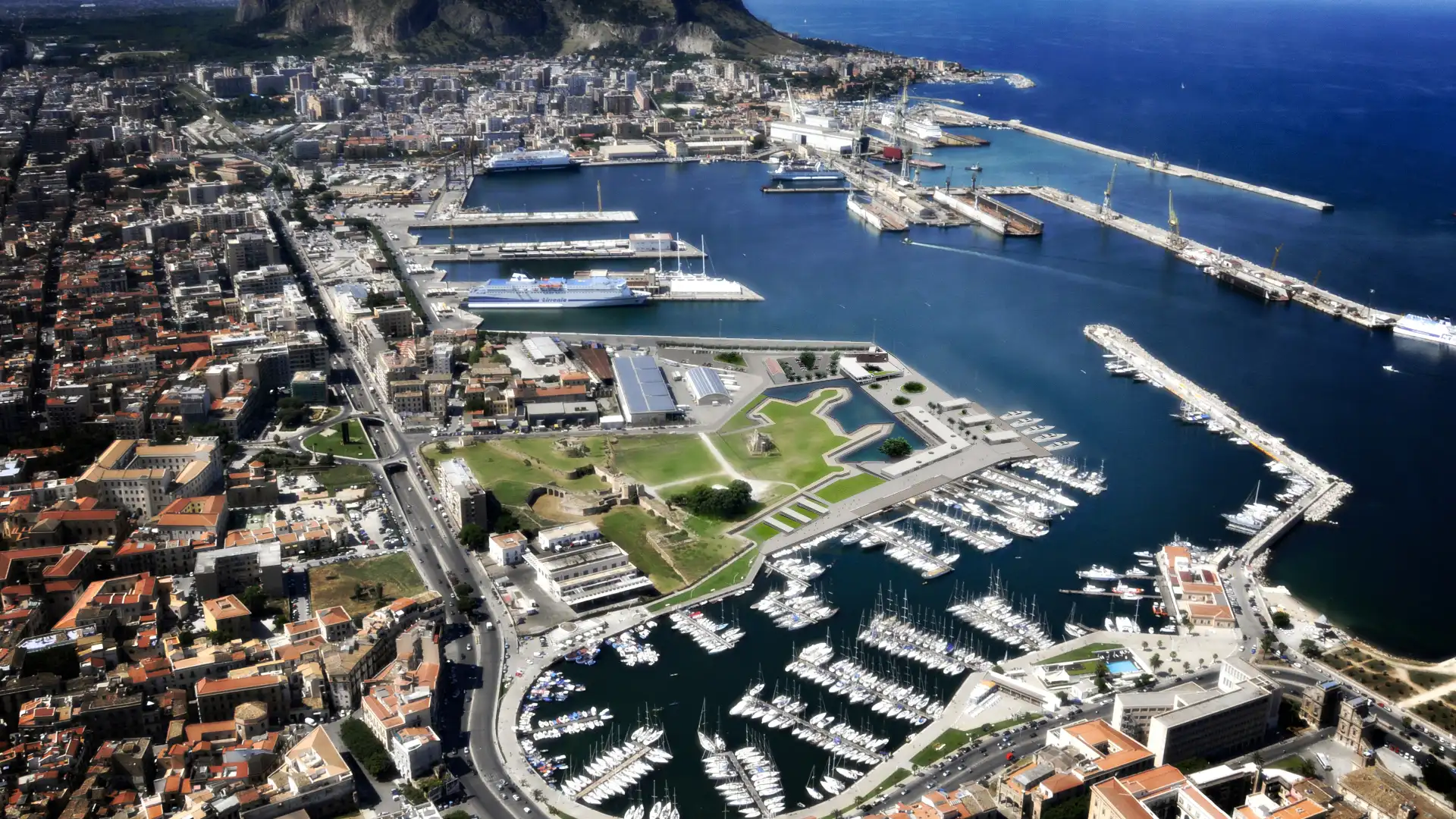







Thank you so much, your posts are always amazing!😍